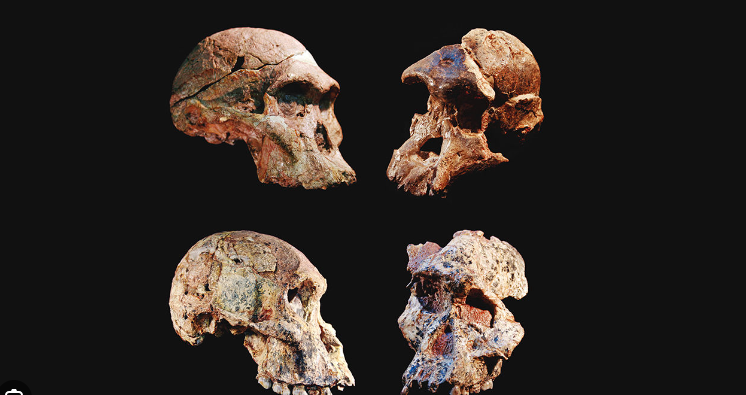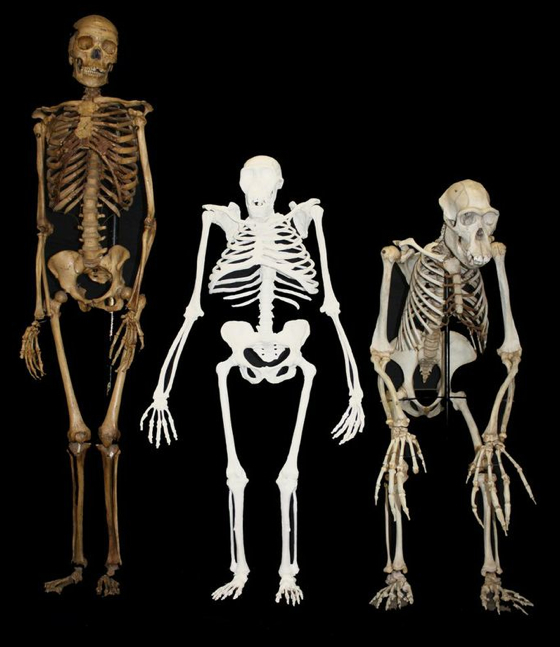
Ancient Skeleton May Rewrite Earliest Chapter of Human Evolution
4.4-million-year-old “Ardi” looked like neither a chimp nor a human
This ScienceNOW slideshow requires the Flash plug-in (version 8 or higher). JavaScript must be enabled in your browser. To see the full slideshow (and not just this one picture), download the latest version of the free Flash plug-in.

Researchers have unveiled the oldest known skeleton of a putative human ancestor–and it is full of surprises. Although the creature, named Ardipithecus ramidus, had a brain and body the size of a chimpanzee, it did not knuckle-walk or swing through the trees like an ape. Instead, “Ardi” walked upright, with a big, stiff foot and short, wide pelvis, researchers report in Science. “We thought Lucy was the find of the century,” says paleoanthropologist Andrew Hill of Yale University, referring to the famous 3.2-million-year-old skeleton that revolutionized thinking about human origins. “But in retrospect, it was not.”
Researchers have long argued about whether our early ancestors passed through a great-ape stage in which they looked like protochimpanzees, with short backs; arms adapted for swinging through the trees; and a pelvis and limbs adapted for knuckle-walking (Science, 21 November 1969, p. 953). This “troglodytian,” or chimpanzee, model for early human behavior (named for the common chimpanzee, Pan troglodytes) suggests that our ancestors lost many of the key adaptations still found in chimpanzees, bonobos, and gorillas, such as daggerlike canines and knuckle-walking, which those apes were thought to have inherited from a common ancestor.

Evidence has been hard to come by, however, because there are almost no fossils of early chimpanzees and gorillas. Until now, the oldest known skeleton of a human ancestor was Lucy, who proved in one stroke that our ancestors walked upright before they evolved big brains. But at 3.2 million years old, she was too recent and already too much like a human to reveal much about her primitive origins. As a result, researchers have wondered since her discovery in 1974, what came before her–what did the early members of the human family look like?

Now, that question is being answered in detail for the first time. A multinational team discovered the first parts of the Ar. ramidus skeleton in 1994 in Aramis, Ethiopia. At 4.4 million years old, Ardi is not the oldest fossil proposed as an early hominin, or member of the human family, but it is by far the most complete–including most of the skull and jaw bones, as well as the extremely rare pelvis, hands, and feet. These parts reveal that Ardi had an intermediate form of upright walking, a hallmark of hominins, according to the authors of 11 papers that describe Ardi and at least 35 other individuals of her species. But Ardi still must have spent a lot of time in the trees, the team reports, because she had an opposable big toe. That means she was probably grasping branches and climbing carefully to reach food, to sleep in nests, and to escape predators.
This item requires the Flash plug-in (version 8 or higher). JavaScript must also be enabled in your browser.




